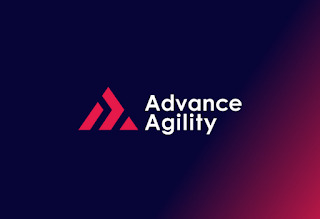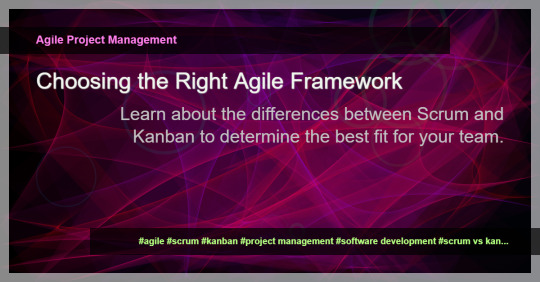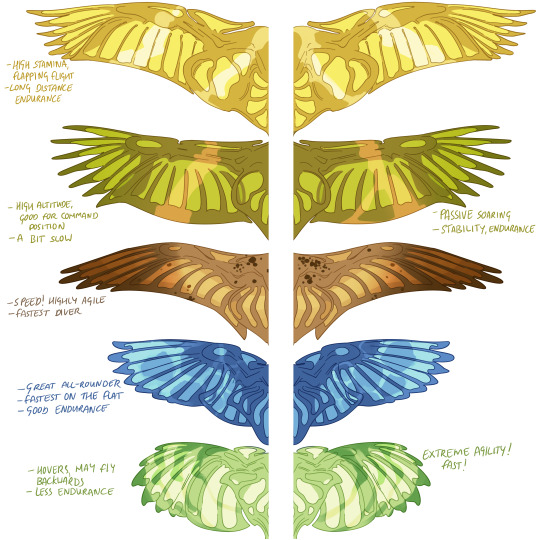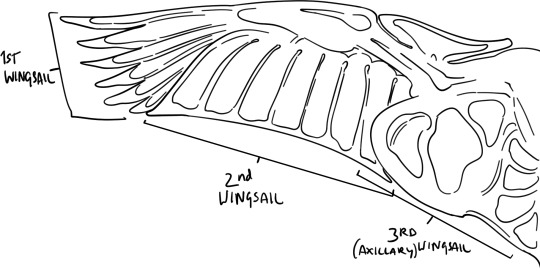#scrum framework
Explore tagged Tumblr posts
Text
Scrum Project Management: A Framework for Agile Success
Scrum project management has emerged as a leading methodology for Agile software development, providing teams with a flexible and iterative approach to delivering high-quality products. In this article, we'll delve into the fundamentals of Scrum, its key principles, roles, artifacts, events, benefits, challenges, implementation tips, and real-world applications.
I. Introduction
What is Scrum Project Management?
Scrum is a framework for Agile project management that emphasizes iterative development, collaboration, and continuous improvement. It enables teams to respond rapidly to changing requirements and deliver valuable software increments in short cycles.
Brief History and Evolution of Scrum
Originally introduced in the 1980s by Hirotaka Takeuchi and Ikujiro Nonaka, Scrum has since evolved into a widely adopted Agile methodology. Its principles draw inspiration from various fields, including lean manufacturing, empirical process control, and organizational psychology.
II. Core Principles of Scrum
Empirical Process Control
At the heart of Scrum lies the principle of empirical process control, which emphasizes transparency, inspection, and adaptation. Teams base their decisions on real-time feedback and data, rather than predefined plans.
Iterative Development
Scrum promotes iterative development, dividing work into small, manageable increments called "sprints." Each sprint typically lasts one to six weeks and results in a potentially shippable product increment.
Collaboration
Collaboration is central to Scrum, with cross-functional teams working closely together to achieve shared goals. Through frequent communication and collaboration, team members can address challenges and capitalize on opportunities more effectively.
Self-Organization
Scrum teams are self-organizing, meaning they have the autonomy to determine how best to accomplish their objectives. This autonomy fosters creativity, ownership, and accountability among team members.
III. Scrum Roles
Scrum Master
The Scrum Master serves as a servant-leader for the team, facilitating the Scrum process and removing impediments to progress. They coach the team on Agile principles and practices, ensuring adherence to Scrum values.
Product Owner
The Product Owner represents the stakeholders and is responsible for maximizing the value of the product. They prioritize the backlog, define user stories, and make decisions about what features to include in each sprint.
Development Team
The Development Team consists of professionals who do the work of delivering a potentially releasable increment of product at the end of each sprint. They are cross-functional and self-organizing, with a collective responsibility for achieving the sprint goal.
IV. Scrum Artifacts
Product Backlog
The Product Backlog is a prioritized list of all desired work on the project. It evolves over time, with new items added, refined, or removed based on feedback and changing requirements.
Sprint Backlog
The Sprint Backlog is a subset of the Product Backlog selected for implementation during a sprint. It represents the work that the Development Team plans to complete within the sprint.
Increment
The Increment is the sum of all the product backlog items completed during a sprint, plus the increments of all previous sprints. It must be in a potentially releasable state and meet the Definition of Done.
V. Scrum Events
Sprint Planning
Sprint Planning marks the beginning of a sprint, during which the Scrum Team collaborates to select the items from the Product Backlog that will be included in the upcoming sprint and create a sprint goal.
Daily Stand-up
The Daily Stand-up is a short, time-boxed meeting held every day to synchronize the activities of the Development Team and identify any impediments to progress. Each team member answers three questions: What did I do yesterday? What will I do today? Are there any impediments?
Sprint Review
The Sprint Review is held at the end of the sprint to inspect the increment and gather feedback from stakeholders. It provides an opportunity to review what was done in the sprint and adapt the Product Backlog as needed.
Sprint Retrospective
The Sprint Retrospective is a meeting held at the end of the sprint to reflect on the team's process and identify opportunities for improvement. It focuses on what went well, what could be improved, and actionable items for the next sprint.
VI. Benefits of Scrum
Improved Flexibility
Scrum's iterative approach allows teams to adapt to changing requirements and market conditions quickly. By delivering increments of working software regularly, teams can respond to feedback and deliver value more effectively.
Enhanced Product Quality
Through frequent inspection and adaptation, Scrum promotes a focus on quality throughout the development process. Continuous testing, peer reviews, and customer feedback help identify and address issues early, resulting in higher-quality products.
Increased Transparency
Scrum provides stakeholders with transparency into the development process, enabling them to track progress, provide feedback, and make informed decisions. This transparency builds trust and fosters collaboration between the development team and stakeholders.
Better Stakeholder Engagement
By involving stakeholders in the development process through events like the Sprint Review, Scrum ensures that their feedback is incorporated into the product. This engagement leads to greater satisfaction and alignment between the product and stakeholder expectations.
VII. Challenges in Implementing Scrum
Resistance to Change
Transitioning to Scrum requires a cultural shift within an organization, which can meet resistance from stakeholders accustomed to traditional project management methods. Overcoming resistance requires strong leadership, clear communication, and patience.
Lack of Experience
Inexperienced teams may struggle to implement Scrum effectively, leading to frustration and disillusionment. Training, mentoring, and hands-on experience can help teams build the skills and confidence needed to succeed with Scrum.
Overcommitment
Teams may overcommit to work during sprint planning, leading to burnout, reduced quality, and missed deadlines. It's essential to set realistic goals and prioritize the most valuable work to ensure sustainable pace and continuous delivery.
VIII. Tips for Successful Scrum Implementation
Training and Education
Invest in training and education for team members, Scrum Masters, and Product Owners to ensure a solid understanding of Scrum principles and practices.
Clear Communication
Foster open and transparent communication within the team and with stakeholders to ensure alignment and shared understanding of project goals and priorities.
Empowering Teams
Empower teams to self-organize and make decisions, trusting them to deliver results and continuously improve their process.
Continuous Improvement
Encourage a culture of continuous improvement, where teams reflect on their process, identify areas for enhancement, and experiment with new approaches.
IX. Scrum vs. Traditional Project Management
Scrum differs from traditional project management methodologies, such as Waterfall, in several key ways. While traditional methods emphasize detailed planning and documentation, Scrum prioritizes adaptability, collaboration, and delivering value early and often.
X. Real-world Applications of Scrum
Scrum is widely used across various industries and domains, from software development to marketing, healthcare, and beyond. Organizations like Spotify, Google, and Salesforce have adopted Scrum to streamline their processes and deliver innovative products to market faster.
XI. Conclusion
In conclusion, Scrum project management offers a powerful framework for Agile development, enabling teams to respond rapidly to change, deliver high-quality products, and maximize value for stakeholders. By embracing Scrum's core principles, roles, artifacts, and events, organizations can achieve greater flexibility, transparency, and collaboration, ultimately driving success in today's dynamic business environment.
XII. FAQs
What is the difference between Scrum and Agile?
While Agile is a broader philosophy or mindset, Scrum is a specific framework for implementing Agile principles in software development. Scrum provides guidelines and practices for iterative development, collaboration, and continuous improvement within Agile projects.
How does Scrum handle changes in requirements?
Scrum accommodates changes in requirements through its iterative approach and flexible mindset. Changes can be incorporated into the Product Backlog and prioritized for future sprints, allowing teams to adapt to evolving customer needs and market conditions.
Can Scrum be used in non-software projects?
Yes, Scrum can be applied to a wide range of projects beyond software development, including marketing campaigns, event planning, construction projects, and more. The key is to adapt Scrum principles and practices to suit the specific needs and constraints of the project.
What is the ideal size for a Scrum team?
The ideal size for a Scrum team is typically between five and nine members, although smaller or larger teams can also be effective depending on the project's complexity and requirements. The goal is to have a cross-functional team with the skills and expertise needed to deliver value independently.
How do you measure the success of a Scrum project?
Success in a Scrum project is measured by the value delivered to stakeholders, the quality of the product, and the team's ability to adapt and improve over time. Key metrics may include customer satisfaction, product quality, team velocity, and time-to-market.
#ScrumProjectManagement #AgileSuccess #ProjectManagement #AgileMethodology #ScrumFramework #AgileProjectManagement #SuccessTips #ProjectSuccess #AgileStrategies #ProjectManagementTips
#Scrum Project Management#Agile Success#Agile Methodology#Project Management#Scrum Framework#Agile Project Management#Project Success#Scrum Guide#Agile Techniques#Scrum Methodology#Agile Framework#Agile Project Success#Project Management Strategies#Scrum Mastery#Agile Mastery#Agile Project Management Techniques#Scrum Tips#Agile Project Management Guide#Agile Project Management Success#Scrum Project Management Tutorial#Project Management Tutorial#Agile Project Management Secrets#Scrum Project Management Blueprint#Agile Project Management Blueprint#Scrum Project Management Demystified#Agile Project Management Demystified#Agile Project Management Mastery
0 notes
Text
https://www.raadl.com/blog/how-do-scrum-master-courses-qualify-professionals-into-different-job-roles/

After completing a Scrum Master course, a professional achieves merits to handle much higher responsibilities. The courses teach to handle all challenges with confidence.
0 notes
Text
Who is a Scrum Master and what they do? #agile #scrummaster #scrum
In the fast-paced realm of agile project management, the Scrum Master wields considerable influence over a team’s success. Far more than a mere facilitator, they are a guiding force, driving collaboration and efficiency. In this blog, we will explore ten real-life examples of how a Scrum Master fulfills their roles and responsibilities, showcasing the practical significance of their contributions…

View On WordPress
#Agile Best Practices#Agile Coaching#Agile Mentoring#Agile Project Management#collaboration#Conflict Resolution#Continuous Improvement#Daily Standups#Development Team#Impediment Removal#Metrics Tracking#Product Owner#Scrum Framework#Scrum Master#Servant Leadership#Sprint Planning#Sprint Retrospective#Sprint Review#Stakeholder Engagement.
0 notes
Text
Is the Agile Hype Over?
Agile hype has been around for over two decades, sweeping through industries with promises of faster delivery, empowered teams, and customer-centric value. But ask around today — from developers and product managers to executives — and you’ll hear a different tone. Burnout from endless sprints. Disillusionment with ceremonies. Frustration with rigid frameworks masquerading as flexibility. So…
#agile#Agile certifications#agile coaching#agile fatigue#Agile Frameworks#agile future#Agile Manifesto#Agile Transformation#DevOps#lean delivery#post-agile#product thinking#Scrum#Scrum Master#team autonomy
0 notes
Text
Maximizing Career Growth with Scrum Master Courses and SAFe Agile Framework Certification
In today’s fast-paced business environment, mastering agile methodologies has become essential for professionals looking to enhance their career prospects. Scrum master courses and SAFe Agile Framework certification are two pivotal qualifications that can significantly elevate your professional standing in the industry. Whether you are a budding project manager, an experienced IT professional, or someone looking to transition into the agile workspace, obtaining these certifications can provide you with a competitive edge. Understanding Scrum Master Courses
Scrum master courses are designed to teach professionals the fundamentals of the Scrum framework, which is a popular agile methodology used for managing and completing complex projects. These courses cover essential topics such as sprint planning, team collaboration, and backlog management. By enrolling in a scrum master course, you not only learn the theoretical aspects of Scrum but also gain practical insights through real-world case studies and projects. Moreover, scrum master courses are ideal for professionals who want to step into leadership roles within agile teams. As a Scrum Master, your primary responsibility is to facilitate the Scrum process, ensuring that your team follows the principles of Scrum while also protecting them from external distractions. The skills you gain from these courses will help you lead your team to success by fostering a culture of continuous improvement and high performance.
The Importance of SAFe Agile Framework Certification
While scrum master courses focus on team-level Scrum practices, the SAFe Agile Framework certification extends your knowledge to the enterprise level. The Scaled Agile Framework (SAFe) is designed to help organizations apply agile methodologies across multiple teams, departments, and even entire organizations. This framework is particularly beneficial for large enterprises that require a coordinated approach to agile implementation.
Obtaining a SAFe Agile Framework certification demonstrates your ability to scale agile practices beyond individual teams and into broader organizational structures. This certification is highly valued in industries that require synchronization across various agile teams, making it an essential credential for senior agile practitioners, program managers, and portfolio managers. By understanding the intricacies of SAFe, you can play a pivotal role in driving large-scale agile transformations within your organization.
Advancing with Leading SAFe Certification
The Leading SAFe certification is a specialized qualification that focuses on leading agile transformations within an organization. This certification is tailored for leaders who are responsible for guiding their teams through the implementation of the SAFe framework. The Leading SAFe certification equips you with the skills needed to effectively lead and manage multiple agile teams, ensuring that they work in harmony towards achieving the organization’s strategic goals.
This certification is particularly useful for senior managers, executives, and change agents who are tasked with driving agile adoption at an enterprise level. With a Leading SAFe certification, you gain a deep understanding of how to align agile practices with business objectives, foster collaboration across departments, and create an agile culture that supports continuous improvement.
Conclusion
In conclusion, scrum master courses, SAFe Agile Framework certification, and Leading SAFe certification are critical qualifications for professionals aiming to thrive in the agile landscape. These certifications not only enhance your technical expertise but also position you as a leader capable of driving agile transformation in your organization. Whether you’re looking to manage a single team or lead an entire enterprise, investing in these certifications will undoubtedly propel your career to new heights.
0 notes
Text
Ever felt like customizing project tools turns into a Starship Enterprise mission? 🚀

Let's embrace the challenges, find the humor in our tasks, and continue to innovate and improve our workflows with Vabro.
After all for Vabro, every mission—no matter how small—contributes to the larger goal of delivering value and achieving success.
Visit Vabro to know more & try it for free.
#Vabro#Agile#Scrum#ProjectManagement#CustomerFocus#Framework#Methodology#Revolution#ProductOwner#ScrumMaster#Core
0 notes
Text
What are the key characteristics of the Scrum framework?
0 notes
Text
Agile Scrum Framework
Agile Scrum Framework
Discover the power of Agile Scrum Framework with our cutting-edge Agile Scrum Software. Streamline your processes for maximum efficiency.

0 notes
Text
The Path to Becoming a Certified SAFe Scrum Master
0 notes
Text
What is the Difference Between Scrum Master and Certified Scrum Master?
“A good Scrum Master will hold team members to account if needed. A great Scrum Master will hold the team to account for not holding their teammates to account.”- Geoff Watts

What do Certified Scrum Masters do?
Certified Scrum Master is the official designation that demonstrates an individual’s height of knowledge regarding the scrum framework and the role. SAFe Scrum Master Certification is a basic-level certification course that focuses on the fundamentals of scrum methodology, iterative process, and team involvement. Following the four important steps such as choosing the course, attending the two-days training course, practicing the test, and taking the exam agile professionals can become certified scrum masters to join large enterprises.
As a Certified scrum master, you are accountable for managing the development process for multiple projects in a large enterprise. You will be responsible for conducting daily Scrum events for agile teams in the company. Including sprint planning, reviewing the sprints, and sprint retrospectives. The scrum master is also responsible for identifying the impediments and coaching the teams with the right implementation of principles and practices of the scrum framework.
What are the best Certification courses for Scrum Masters?
Large enterprise values the scrum process and focuses on implementing scrum methodologies in their project development process. If you are planning to work as a scrum master or join these huge companies, you must consider joining the scrum master training course. When you are a certified candidate, it becomes easier for business leaders to choose you over other applicants without certification.
Agile-certified scrum masters are valued because they possess relevant knowledge to understand scrum principles and practices. They know how to work with cross-functional teams and generate timely feedback. They are trained to implement various strategies to improve the quality of the product. Most importantly if you complete the scrum master training course, you will be considered as a reliable leader who can guide the agile team members in achieving the business goals.
There are various SAFe Scrum Master Certifications available online. And so, choosing the right certification course that best suits your job role is important. Before selecting the course, go through the contents of the course materials thoroughly.
The best scrum master certification courses to advance your career:
Scrum Master Certification course.
Scrum Product Owner Training course.
Scrum Developer Training.
Agile Leadership course.
Managing Agile Projects with Scrum Framework course.
PMP Certification course
Some of the popular courses in the market:
Certified Scrum Master (CSM)
Certified Scrum Product Owner (CSPO)
Professional Scrum Master (PSM)
Certified Scrum Professional (CSP)
Certified Scrum Developer (CSD)
Scrum Master vs. Certified Scrum Master
Scrum master is the professional role in organizations that prefer using scrum framework for improving the value of their projects. They have the experience of working in an agile environment. Mostly, scrum masters in a company deal with one or two projects as they possess the basic practical knowledge to handle tasks mentioned in the priority lists.
And Certified Scrum Master role focuses on the wider perspective of the scrum practices. They are well-trained individuals who can work on multiple projects collaborating with other agile professionals. They possess an in-depth understanding of the concepts and various tools and techniques that are useful in running various projects in a large enterprise. The certified candidate is well-trained in implementing strategies that help maintain sustainability which is a core requirement of all the business.
If you want to advance your career and reach new heights in your agile career, learn about the certification courses, the course material, the scrum master certification exam fee, and about online classes available on our website.
Title Description
How to transition into a SAFe Scrum Master role from other agile roles?
If you are into other agile professions such as Product Owner, Software Architect, Developer, Tester, or coder, you can advance your career prospects by shifting to SAFe Scrum Master by attending certified scrum master training online courses.
What can you benefit from the SAFe Scrum Master Certification course?
Attending the SAFe Scrum Master Certification course can train you on generating quicker releases, improving visibility, developing alignment, value higher customer satisfaction, maintaining higher control over processes and team members, handling changing priorities, reducing costs, improving productivity, delivering valuable content, and working on lower the risks in the process.
What tools and techniques are used by Certified Scrum Master?
Certified Scrum master as a coach and a mentor for the agile team members use various types of tools such as project management tools like Jira, Clarizen, and Click Up. Collaboration tools like Slack, zoom, and Trello. And visualization tools like velocity charts and burndown charts to effectively perform their tasks with multiple projects.
About Advance Agility
We, at Advance Agility, are the new-age Agile Coaching, Consulting and IT services company. We enable end-to-end Digital Transformation. Agile execution is integral to our being. We are doing SAFe implementation with small, medium and large organization across the globe. Our vision is to be the leading Agile execution player globally. To keep adding value at every process stage. We are on a mission to empower our clients, move from concept to cash in the shortest sustainable lead time by adopting human centric approach to business agility. Embracing the change is in our DNA. Things that keep us apart are Quicker and Seamless execution with End-to-end gamut of services. Our Global presence and Stellar Track Record give us an edge over our competitor.
Connect with us at advanceagility.com to learn about SAFe and SAFe Implementation. We provide various SAFe certification courses along with DevOps, Scrum, Agile Coaching and more trainings. Write to us at [email protected] for any agile training or consulting needs. We are always looking for competent agile trainers as well. So if you are a good trainer or want to become one, do get in touch with us to that we can learn, grow and achieve together.
1 note
·
View note
Text
Scrum vs Kanban: Which Agile Framework is Right for You?
Scrum vs Kanban: Which Agile Framework is Right for You? Agile project management methodologies like Scrum and Kanban have gained significant popularity among software development teams. Both frameworks offer unique approaches to project planning, task management, and team collaboration. So, how do you decide which one is the best fit for your team? Scrum Scrum is an iterative and incremental…

View On WordPress
#agile#agile framework#Agile Project Management#kanban#project management#scrum#scrum vs kanban#software development#technologies
0 notes
Link
Agile Methodology vs. Waterfall vs. Scrum: A Comprehensive Comparison
Software development methodologies play a crucial role in shaping the approach and success of software projects. Among the most widely used methodologies are Agile, Waterfall, and Scrum. Each methodology has its own strengths and weaknesses, and understanding the differences between them is essential for project managers and development teams. In this article, we will provide a comprehensive comparison of Agile, Waterfall, and Scrum methodologies, exploring their key principles, characteristics, and suitability for different project types.
#agile#agile framework#agile methodology#waterfall#waterfall methodology#scrum#web development#web developing company#web developers#ecommerce
0 notes
Text
The beauty of LeSS: Scaling Agility
As organisations strive to enhance their agility and responsiveness, the challenge of scaling agile practices becomes increasingly significant. When teams grow in number and complexity, maintaining the core principles of agility—like collaboration, adaptability, and customer focus—can become difficult. This is where Large Scale Scrum (LeSS) comes into play, providing a framework designed to help…
#agile#Agile Frameworks#Agile Transformation#Continuous Improvement#LeSS#product management#Scaling Agility#Scrum#software development#Team collaboration
0 notes
Text

I wanted to keep drawing some pern dragon stuff because I'm now writing a full AU set in weyr but I didn't want to put this stuff on my main blog or patreon due to it being basically for my own reference, though i felt others would like it too! so here is My Take On Dragon Wings By Type...
It's no secret I love drawing bird wings and prefer them a lot over traditional dragon wings. Growing up, I read the pern books featuring cover art of dragonfly-like wings with lots of little translucent panels, which I always loved. So I thought I'd try to nail down some wing shapes & structures by blending those two things i like together. I am aware dragons fly by telekinesis but I prefer a more realistic type of creature design so I will be choosing to ignore that fact. I do not care about strict canon compliance but I do like to keep some of that framework there as well, for fun.

The wing is made up of three main sails, as well as a propatagium sail (in front of the elbow). They are relatively polymorphic and can expand or contract to an extent to change the shape of the wing in response to flight demands, like the wing of an airliner. The trailing edge can expand and the slots between the spars of the 1st wingsail can deepen or become shallower (where those are a feature). The main structural matrix is opaque, while the membranous 'sails' are translucent and let light through like stained glass. These are a bilayer of membrane with air sandwiched between, which forms part of the air sac & respiratory system.
It makes sense for the original engineers of dragons to diversify dragon wing types by colour so that when fighting Thread, there's a dragon for every conceivable aerial job.
[individual descriptions under the cut]
Queens have the longest wings, though the largest bronzes can rival them for surface area. Gold wings are high endurance - a queen can fly further than any other dragon in active level flight, leaving even the swiftest bronzes behind if they can't muster up the energy reserves to catch her. She is an effective flier at all elevations and can pass very low over terrain without issue as well; she is an expert at taking advantage of the ground effect, where extra lift is generated within one half of a wingspan above land. This way, she can pass low below the main wings fighting Thread to catch any stragglers without expending too much energy. However, she is not very agile and may need a bit of a run-up or cliff-edge to get airborne.
Bronzes are suited for command positions during Threadfall, rising highest and maintaining that altitude effortlessly by soaring on thermals. From this vantage point they can easily survey the wings of riders below and make tactical decisions to direct the tide of battle. They have the size and stamina to chase queens, but might find it difficult to keep up on the flat, so they continually select for fitter hatchlings as only the best manage to mate. It takes a very clever and agile bronze to catch a green, if they are so inclined.
Browns are swift, highly agile, and the fastest vertical fliers, ideal for diving through the Thread mass from top to bottom while the other types pass horizontally. During earlier Passes, browns were capable of using their speed to catch queens, but as queen & bronze endurance gradually increased, browns struggle to keep up if they haven't managed to immediately catch their mate in the starting scrum, which is unlikely due to the bulkier bronze dragons being able to shove the browns aside.
Blues are fast on the flat and nicely manoeuvrable, with enough endurance to last a full Threadfall. Good all-rounders with a characteristic vertical take-off, they work best in the horizontal plane in battle but really they can do a little bit of everything. They often beat browns to catch greens, being very precise in flight and almost as manoeuvrable as their green mates.
Greens make up for their low stamina with their extreme manoeuvrability. Their short and elliptical wings let them turn on a dime, hover, and even fly backwards if they are sufficiently skilled. They have the fastest wingbeats, flying with a distinct thrumming sound. Of all the types they are least likely to be hit by a stray Thread, but they tire easily on the flat and have no soaring ability at all, often tapping out midway through battle in favour of replacements. In battle, greens excel at catching odd and skewed clumps of Thread that don't fall as predicted, or ones that are missed by the other riders. Green mating flights are a whole different beast to gold mating flights, where extreme aerial acrobatics are favoured instead of endurance and altitude, and these flights may be over within seconds. You need to be able to withstand a Lot of G-force to be a green rider.
892 notes
·
View notes
Text
Understanding Agile Methodology: A Human-Centered Approach to Project Success! 🚀

Agile methodology is a dynamic project management approach that prioritizes adaptability, collaboration, and customer satisfaction.
🤝 Collaboration: Agile emphasizes teamwork and communication, enabling individuals to work together effectively towards shared objectives.
🔄 Adaptability: Agile embraces change, allowing teams to respond quickly to evolving requirements and feedback, ensuring project success in dynamic environments.
🎯 Customer Satisfaction: Agile focuses on delivering value to customers through iterative development and continuous improvement, resulting in products that better meet customer needs.
Join the Agile movement today and unlock the potential of your projects!
Visit www.vabro.com and see how Vabro can transform the way you manage projects. 💡
#Vabro#Agile#ProjectManagement#CustomerFocus#Scrum#Framework#Methodology#Revolution#ProductOwner#ScrumMaster#Core
0 notes
Text
it's like, in agile (which can be scrum or kanban or neither), you have your sprints. sprints are when you work on tickets, or issues, or stories. each of those gets points, which is how you get story points, and you need to complete a certain number of points per sprint. people are grouped into different workstreams, or sometimes they even call them squads and guilds, and those groups do their sprint planning and standups together but they also check in with other groups too. in certain organizations who do scrum or pseudo-scrum, one guy is in charge of each sprint (except sometimes they call it a "scrum" instead of a sprint), and he's known as the scrum master. and across all the agile frameworks, each story or ticket or issue always gets assigned to a single person. but when you have a group of related stories that are all part of the same big project? that's an epic
387 notes
·
View notes